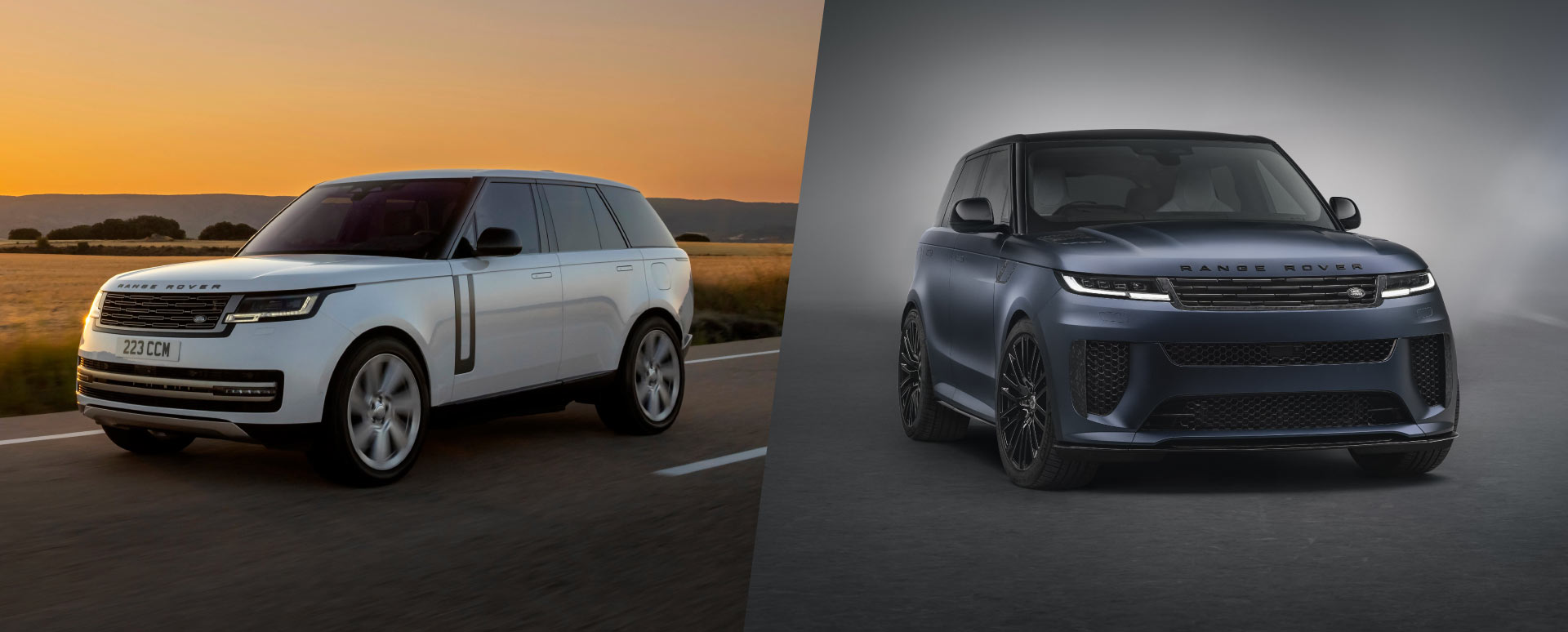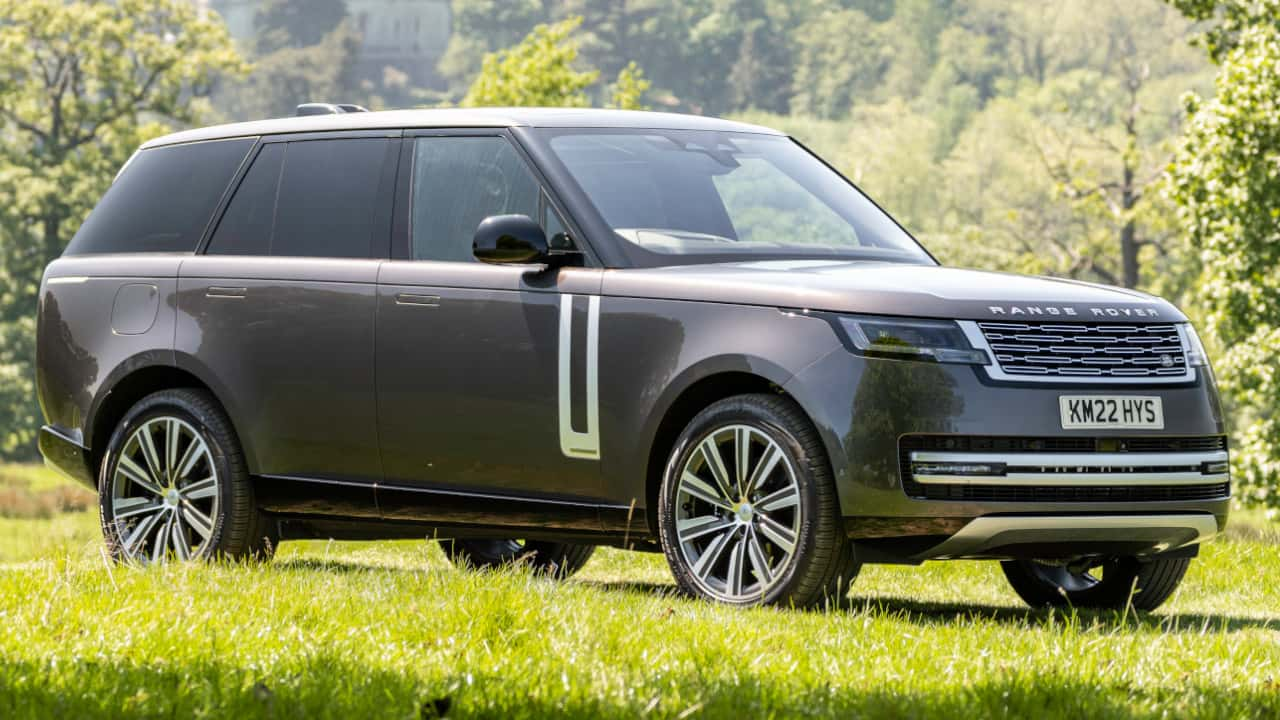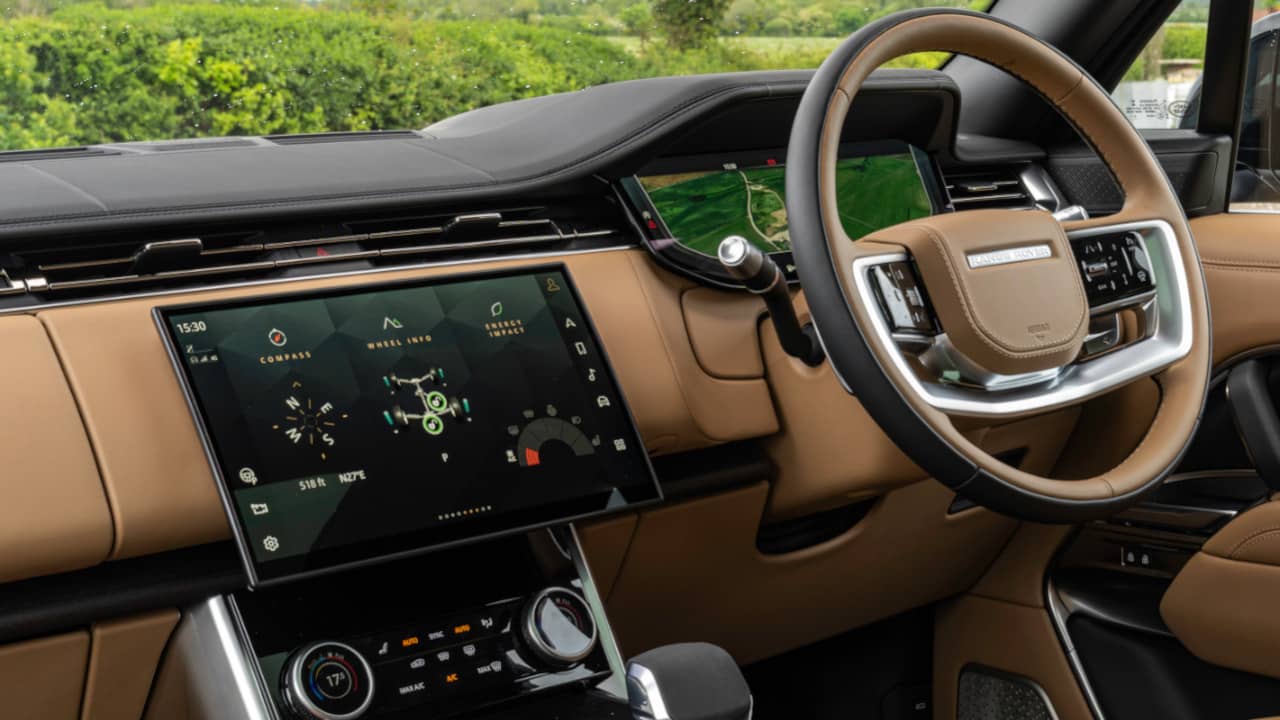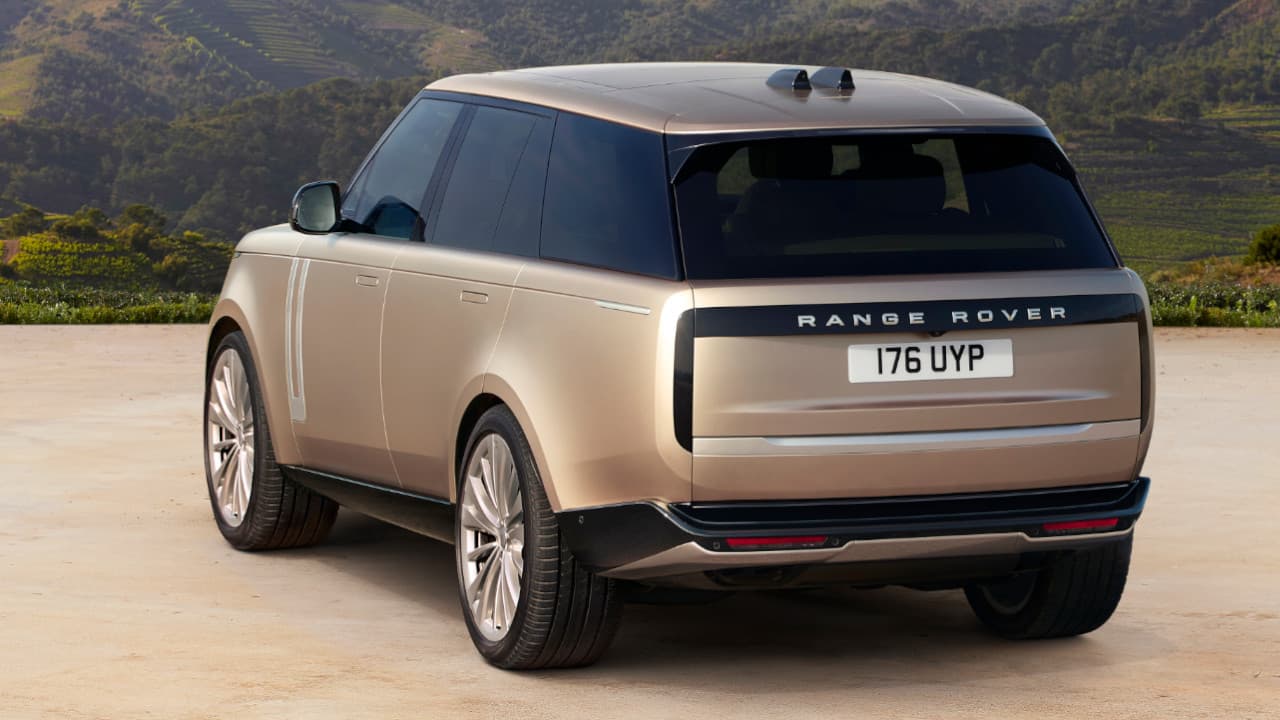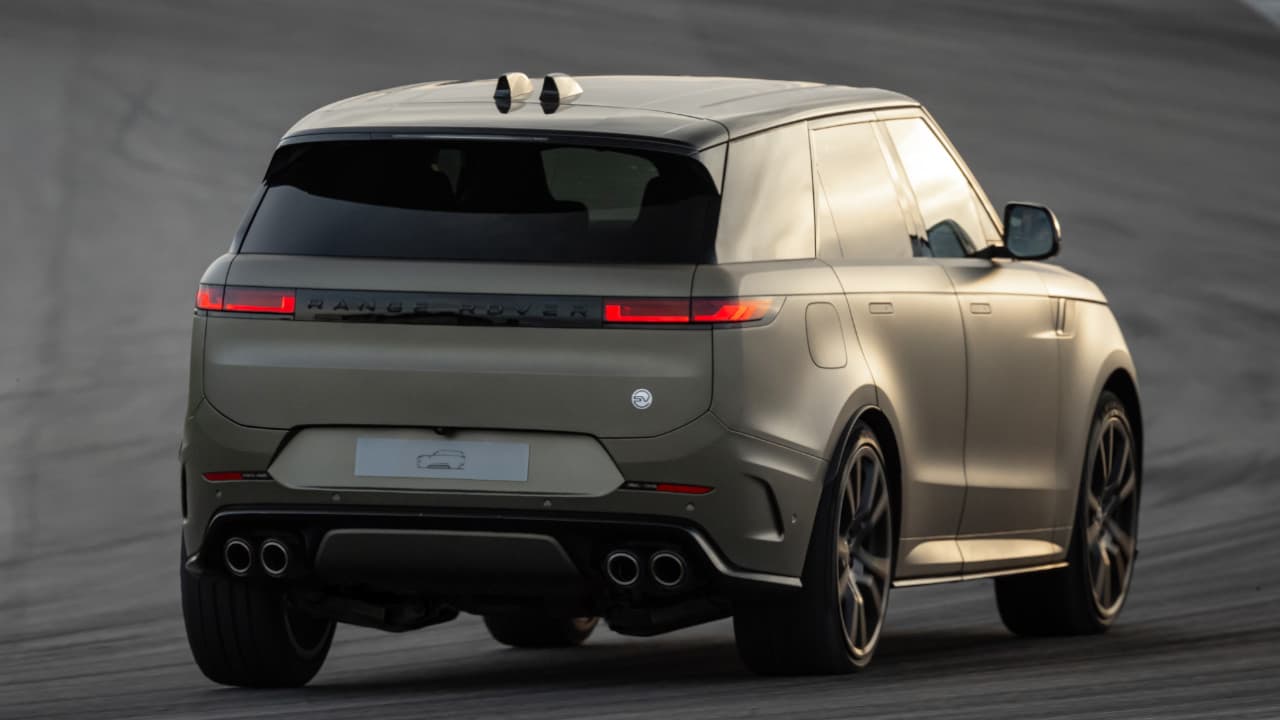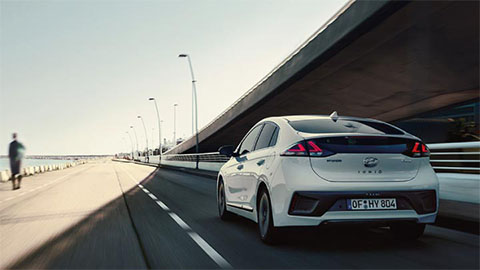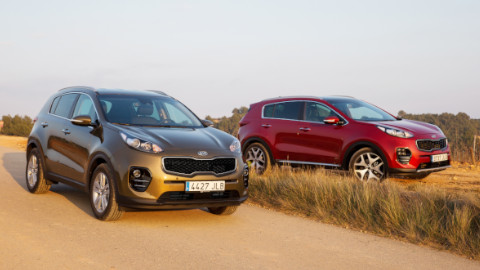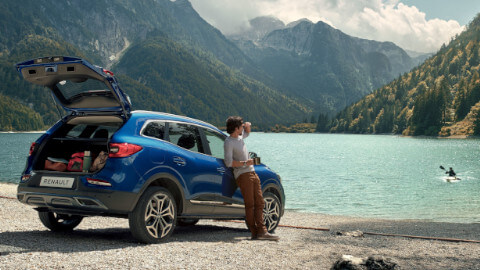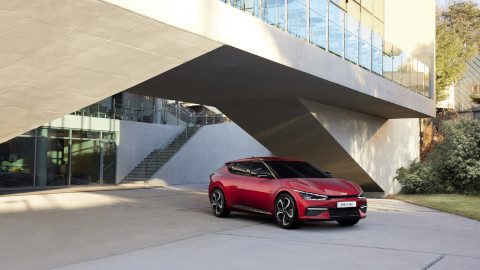Range Rover vs Range Rover Sport: Used Car Comparison
28th Mar 2025
The Range Rover is one of the finest luxury SUVs available. It exudes status on-road, cocooning occupants in fine opulence, whilst unlike many modern SUVs, the Range Rover is also incredible off-road.
And like many popular cars, there's also a more dynamic variant, if you're looking for something a little more sporty. This is where the Range Rover Sport comes in. Sitting under the Range Rover in terms of status, but does that mean it's not as good?
Join us as we compare these two iconic SUVs to see if there is more than meets the eye when it comes to a used Range Rover versus a used Range Rover Sport.
Contents
- Introduction and Design
- Versions and Performance
- Interior and Technology
- Practicality
- Value and Final Thoughts
Introduction and Design
Introduced in 1970, the Range Rover has enjoyed multiple generations, and is now, as of 2022, in its fifth generation (pictured above). Its sportier sibling, the Range Rover Sport, has been a relatively new model in comparison, first appearing in 2005. It's now in its third generation, as of 2022.
On the face of it, both the Range Rover and Range Rover Sport may look identical to many, but look closely and you'll start to see the differences more easily. The Range Rover is more of an 'old money' design, supporting cleaner lines and more traditional silver detailing in places like the grille, side details, and wheels. The exhaust is also hidden, showcasing a more subtle approach, almost playing down its power. Whilst the Range Rover Sport has a lower stance, more aggressive front and rear bumper design, along with four exhaust pipes proudly on show, indicating its more dynamic character.
Range Rover presents an almost under-the-radar design, whilst the Sport is more vocal about its appearance.
Versions and Performance
There are many versions of the Range Rover and Range Rover Sport, allowing you to choose the perfect used model to fit your lifestyle and personal taste. This leads on from the Range Rover's more subtle, classier approach, whilst the Sport is more about individual style, and showcasing its more dynamic nature, which comes across more in the versions available.
Range Rover models usually can be had in the following, enhancing as you go further up the range with SE, HSE, Autobiography, First Edition and SV versions. Engine choice is strong, and provides the perfect amount of performance, despite the Range Rover's luxury nature. It's almost like you won't need the performance, but are glad it's there. And so you'll find 3.0-litre petrol and diesel units, along with a 4.4-litre petrol, as well as plug-in hybrid options too. 0 to 62mph times range from 6.3 seconds to as low as 4.3 seconds - meaning no Range Rover is slow.
Then, there's the Range Rover Sport, which you'd expect to be quicker. But, there are, in fact also slower versions, interestingly, such as the D250 S, with its 245bhp diesel, offering a 7.3 second 0 to 62mph time. But then, opt for the P635 Edition One SV (picutred above) with its 626bhp V8 engine under the bonnet, and the 0 to 62mph time drops to a rapid 3.8 seconds.
It's worth noting that in both ranges, there's a PHEV version, which blends excellent performance with enhanced economy, and up to circa 70 miles of electric range.
Interior and Technology
Both interiors of the Range Rover (pictured above) and Range Rover Sport showcase fine material choice, and fully digital instrument clusters, complemented by a large infotainment central display, too. And if you're already accustomed to Apple CarPlay and Android Auto, you'll be pleased to know these come as standard with both models.
Generally, both feel pretty similar interior-wise, are full of quality materials and details, and are nice places to spend time. The Range Rover Sport, being the more sporty of the pair, can be found with more sculptured sport seats in some versions.
As for technology, both have multiple systems within the car to ensure that no matter the type of road surface you are on, whether it be tarmac, mud, gravel, or snow, you can put them in certain modes to make light work of the terrain you're dealing with. Naturally, the Sport is more dynamic, with press photos showing it on a race track, so if you're more of a driver, than one who likes to be comforted whilst driving, the Sport will be more up your street, and vice versa.
It's also worth noting that heater controls are within the infotainment touchscreen, which could annoy some users, but the system itself is pretty easy to use, so it shouldn't be too much of a problem.
Practicality
As you'd expect, both the Range Rover (pictured above) and Range Rover Sport are extremely practical vehicles. There is a lot of interior space, with the option of a seven-seater in long-wheel base Range Rover models.
However, in standard wheelbase models, the Range Rover offers a colossal 818-litre boot. Drop the rear seats and there's a van-like 1,841 litres. The Range Rover Sport offers 647 litres of boot space, which is still excellent, and can increase to 1,491 litres with the rear seats folded.
Therefore, if you require more space, the Range Rover will be more up your street, whilst if you are okay with trading a little space for a more dynamic, and slightly smaller Range Rover model, then the Sport is a fine alternative.
Value and Final Thoughts
If you're after an SUV that is arguably the best when it comes to luxury, but can also excel on any off-road terrain, then the Range Rover is the textbook answer. That said, the Range Rover Sport is also brilliant, and can go off-road with ease, and has a more dynamic look, which some will prefer.
You tend to see a lot of Sport models receive the aftermarket treatment, usually attracting younger buyers who like the idea of the luxury, but also the dynamic and customisable nature. The Range Rover perhaps appeals to a more mature buyer, or is popular with some fields of work like farming and the like, due to its usability.
So, is the Sport just a cheaper Range Rover? It all depends on how you look at it. Many car manufacturers offer sportier, smaller, more affordable models. And they sell well. Look at BMW with more compact M cars based on their smaller models, they are often seen as the more driver-focused options, with some saying they are better than the range-topping larger, premium models.
This is similar with the Range Rover and Range Rover Sport. Some will prefer the more luxurious, understated, yet classic nature of the Range Rover, while some will love the more dynamic, smaller and more affordable Sport model. Whichever you go for, you won't be disappointed as technically they are very similair, but on the other hand, they are so very different.
Think of the Range Rover as being like a fine pair of leather shoes tailored to perfection to offer class, comfort and style. The Sport (pictured above), on the other hand, is like a pair of high-tech running shoes; they are both a shoe but are built for different purposes.
Find your perfect used car at Evans Halshaw
Whether you’ve decided on the flagship Range Rover, or the sportier sibling, in the form of the Range Rover Sport, or want to browse other used cars, we can help you find the right one. Explore our selection of used vehicles and discover your next used car today.
Also, if you found this comparison helpful, check out our for more buying guides and expert advice on choosing your next car.

